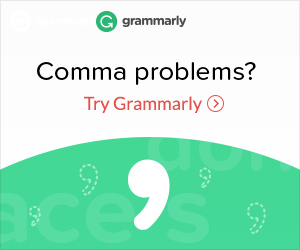Video marketing is an essential aspect of any business’s marketing strategy. With the rise of online video platforms, such as YouTube and Vimeo, and the increasing accessibility of video production technology, video marketing has become an increasingly popular and effective way to reach and engage customers.

Video is one of the most effective ways to communicate with potential customers. It allows businesses to showcase their products and services engagingly and visually, and it helps to build trust and credibility with their audience. Video content is also more likely to be shared and go viral, which can lead to increased brand awareness and customer acquisition.
Video marketing can help to boost brand awareness and drive sales in several ways. It can be used to showcase products and services, demonstrate their value, and create a sense of trust and credibility with customers. Video testimonials and product demos can also be used to build social proof and encourage customers to make a purchase. Additionally, video marketing can help to increase website traffic, improve SEO, and drive lead generation. Overall, video marketing is a powerful tool that can help businesses to reach and engage their target audience, build trust, and drive sales.
Creating a Video Marketing Plan
Creating a video marketing plan is essential for ensuring that your video marketing efforts are effective and aligned with your overall business goals. Here are a few key steps to follow when creating a video marketing plan:
Identifying goals and objectives
Before you start creating videos, it’s important to define what you hope to achieve with your video marketing efforts. Are you looking to increase brand awareness? Drive sales? Generate leads? Identifying specific and measurable goals and objectives will help you to create videos that are tailored to your audience and aligned with your business objectives.
Target audience research
Once you’ve identified your goals and objectives, it’s important to research your target audience. Who are they? What are their pain points? What type of content do they engage with? Understanding your target audience will help you to create videos that resonate with them and are more likely to achieve your goals.
Choosing the right type of video for your message
There are many different types of videos that you can create, such as explainer videos, product demos, testimonials, and more. It’s important to choose the right type of video for your message and your audience. For example, if you’re trying to generate leads, a product demo video may be more effective than a testimonial video.
Scriptwriting and storyboarding
Once you’ve chosen the right type of video, it’s time to start writing the script and creating a storyboard. The script should be clear, concise, and compelling, and it should align with your goals and objectives. The storyboard should be used to visualize the key scenes and shots of the video.
Finding the right production company or DIY tips
Finally, it’s time to start producing your video. You can either work with a professional production company, or you can choose to do it yourself. If you’re going the DIY route, there are many affordable video production tools and resources available that can help you to create professional-looking videos. Whatever you choose, make sure to choose the option that fits best with your resources, goals and target audience.
Optimising Video Content
Creating a great video is just the first step. To ensure that your video is seen by as many people as possible, it’s important to optimise the video for different platforms and search engines.
Tips for creating compelling and engaging videos
- Have a clear message: Before you start creating your video, make sure you have a clear message or purpose. Your audience should be able to understand the main point of your video within the first few seconds.
- Keep it short and sweet: Attention spans are short, so keep your videos short and to the point. Aim for 1-2 minutes in length, and make sure the most important information is at the beginning.
- Use visuals and animations: Visuals and animations can help to keep your audience engaged and make your video more interesting. Use images, videos and animations to highlight key points and add visual interest to your video.
- Add background music and sound effects: Music and sound effects can help to create a more engaging and immersive experience for your audience. Make sure to choose a piece of background music that fits the mood of your video.
- Use text and captions: Text and captions can help to break up your video and make it more engaging. Use text and captions to highlight key points, or to provide additional information and context.
- Add a call-to-action: Your video should have a clear call-to-action, whether it’s to subscribe to your channel, visit your website, or make a purchase. Make sure your call-to-action is prominent and easy to understand.
- Use video maker: There are many online video maker tools available, which can help you to create professional-looking videos without the need for expensive equipment or editing software. Look for a free online video maker that offers a wide range of templates, animations, and other features to help you create engaging and compelling videos.
- Optimise your videos for SEO: Optimise your videos for search engines by including relevant keywords in the title, description, and tags. This will help your video to be found by the people who are searching for information related to your video
Best practices for video SEO
To optimise your video for search engines, it’s important to use relevant keywords in the video title, description, and tags. You should also include a transcript of the video and closed captions, which can make your video more accessible to users and search engines.
Utilizing video on different platforms
Different platforms have different best practices for uploading and sharing videos. For example, on YouTube, it’s important to use tags and a clear title and description. On Instagram, you can use hashtags and location tags to make your video more discoverable. On Facebook, you can use closed captions and subtitles to make your video more accessible to users.
Measuring video performance and analyzing data
Once your video is online, it’s important to track its performance and analyze the data. There are many tools available that can help you to track the number of views, engagement, and conversions. Use this data to optimise your video and improve its performance over time.
Overall, optimising video content is a continuous process that requires testing and monitoring, but following the best practices and using video maker and video maker online tools can increase the chances of your video being seen by many people and achieve your goals.
Case Studies
Examples of Successful Video Marketing Campaigns
- Old Spice’s “The Man Your Man Could Smell Like” campaign
- Apple’s “Think Different” campaign
- Nike’s “Just Do It” campaign
- Dove’s “Real Beauty” campaign
Analysis of What Made These Campaigns Successful
- Old Spice’s “The Man Your Man Could Smell Like” campaign: This campaign used humour and a memorable character to break through the clutter and connect with its target audience.
- Apple’s “Think Different” campaign: This campaign used powerful and emotive language to connect with its target audience and communicate the brand’s values.
- Nike’s “Just Do It” campaign: This campaign used a motivational message and strong imagery to appeal to its target audience of athletes and fitness enthusiasts.
- Dove’s “Real Beauty” campaign: This campaign used real women and a positive message to break through the clutter and connect with its target audience of women.
Lessons That Can Be Learned from These Case Studies
- Use humour, boldness, and a memorable character to break through the clutter and connect with your target audience
- Use a limited budget to create a viral sensation
- Use powerful and emotive language to communicate your brand’s values
- Use motivational messaging and strong imagery to appeal to your target audience
- Use real people and a positive message to connect with your target audience.
Conclusion
Video marketing has become an essential tool for businesses looking to connect with their target audience. From increasing brand awareness to boosting conversions and sales, the benefits of video marketing are numerous. With the power and reach of video marketing, businesses should consider incorporating it into their marketing strategies. A well-produced and targeted video can be a highly effective way to reach and engage with potential customers.
For businesses looking to learn more about video marketing, there are many resources available online. From tutorials and guides to case studies and best practices, businesses can find a wealth of information to help them create effective and successful video marketing campaigns.
Sponsored Content: This post is sponsored content and the placement has been paid for or contains affiliate links. For full information, see our terms of use





















